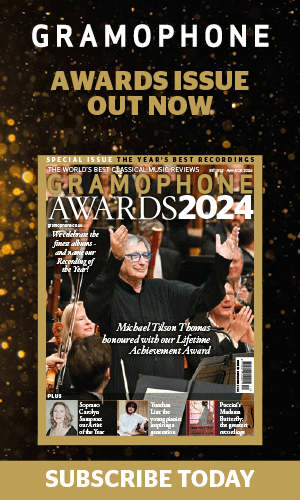Fauré's Ballade, Op 19
Monday, January 14, 2013

The Gramophone Choice
Coupled with Franck Symphonic Variations, Op 46 d’Indy Symphonie sur un chant montagnard français, Op 25
François-Joël Thiollier pf National Symphony Orchestra of Ireland / Antonio de Almeida
Naxos 8 550754 (55' · DDD). Buy from Amazon
François-Joël Thiollier’s playing is individual, often impulsive but always idiomatic, helped by the sensitive, guiding hand of a conductor well acquainted with the music. A more high-profile production would probably have retaken those passages where piano and orchestra coordination is occasionally fractionally awry, such as in the last variation of the Franck, but it might also have seemed less spontaneous. Thiollier's rubato is always distinctive and attractive; the style, particularly and crucially in the Fauré, properly fluid. Here you notice how Almeida's accompaniment is discreet when it needs to be and assertive when it needs to be, but also reactive in, for example, the orchestra's echoing repetitions, repetitions that can embarrass as clichés if the collaboration is not working. Both the piano and the orchestra’s woodwind are discreetly prominent but internal balances are generally excellent.
Additional Recommendations
Ballade, Op 19*. Masques et bergamasques, Op 112. Pavane, Op 50. Fantaisie, Op 79**. Pénélope – Overture. Elégie, Op 24***. Dolly Suite (orch Rabaud)
*Kathryn Stott pf **Richard Davis fl ***Peter Dixon vc BBC Philharmonic Orchestra / Yan Pascal Tortelier
Chandos CHAN9416 (72‘ · DDD). Buy from Amazon
The biggest concertante work here, the Ballade of 1881, is Fauré’s orchestration of his piano piece of the same name; it’s gentle music that persuades and cajoles in a very Gallic way. Though not an overtly virtuoso utterance, it makes its own exacting technical demands on the soloist, among them being complete control of touch and pedalling. The highly regarded Fauréan Kathryn Stott meets these with consistent success.
Masques et bergamasques, which takes its title from Verlaine’s sad, mysterious poem Clair de lune, is a late stage work that the composer himself described as melancholy and nostalgic, but it’s hardly Romantic, being instead pointedly neo-classical in character and shape. The playing here under Yan Pascal Tortelier is very satisfying, as are the elegant flute solos of the exquisitely delicate Pavane, performed here without the optional chorus, and in Dolly. The rarely heard Overture to the opera Pénélope is also effectively presented here.
There’s little rhetoric and no bombast in Fauré’s art but how civilised he was, and what sympathetic interpreters serve him here! The recording is warm yet also delicate.
Ballade* Coupled with Leigh Concertino for Piano and Strings** Mozart Piano Concertos – No 15 in B flat, K450*; No 24 in C minor, K491***
Kathleen Long pf *National Symphony Orchestra; **Boyd Neel String Orchestra / Boyd Neel; ***Concertgebouw Orchestra / Eduard van Beinum
Dutton CDBP9714 (75‘ · ADD). Recorded 1944-48. Buy from Amazon
A richly experienced chamber musician, Kathleen Long (1896-1968) was partnered and praised by Casals, played Ravel’s ‘Ondine’ to the composer and gave over 60 National Gallery concerts during the Second World War. Though her playing may initially seem too restrained, you find yourself wondering why you’ve never enjoyed music so much or been made so aware, however unobtrusively, of its innermost spirit. It’s in Fauré’s Ballade that she makes her finest impression. Indeed, it’s difficult to imagine this magical work played more serenely or inwardly. Even French critics wary of foreign interpreters marvelled over this recording. Her affection is evident in every caressing bar and makes for a perfect conclusion to a delectable disc. Long was a born aristocrat of the keyboard and you’ll look in vain for any overt or disfiguring drama in her lucid and stylish performance of Mozart’s C minor Concerto. The recordings have come up well and the inclusion in the booklet of a 1950 Gramophone interview is an illuminating bonus.









